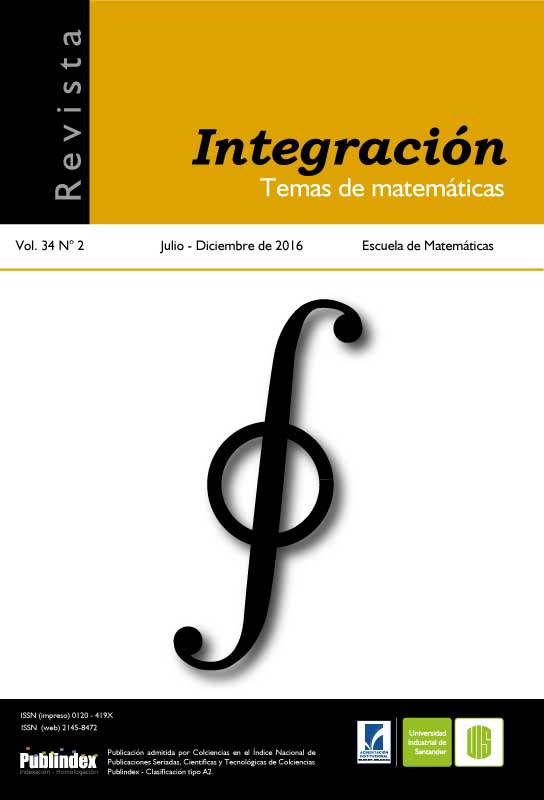Research and Innovation Articles
Published 2016-12-09
Keywords
- Leray-Schauder degree,
- SIR models,
- periodic orbits,
- reproductive number
How to Cite
González-Ramírez, L. R., Osuna, O., & Villavicencio-Pulido, G. (2016). Oscillations in seasonal SIR models with saturated treatment. Revista Integración, Temas De matemáticas, 34(2), 125–131. https://doi.org/10.18273/revint.v34n2-2016001
Copyright (c) 2016 L. Rocío González-Ramírez, Osvaldo Osuna, Geiser Villavicencio-Pulido

This work is licensed under a Creative Commons Attribution 4.0 International License.
Abstract
In this work, we give some conditions for the existence of periodic orbits for a Susceptible-Infectious-Recovered (SIR) model with seasonal saturated incidence functions and saturated treatment rate. We use LeraySchauder degree theory to prove the existence of periodic orbits.
To cite this article: L.R. González-Ramírez, O. Osuna, G. Villavicencio-Pulido, Oscillations in seasonal SIR models with saturated treatment, Rev. Integr. Temas Mat. 34 (2016), No. 2, 125131.
Downloads
Download data is not yet available.
References
- Brown R.F., A topological introduction to nonlinear analysis, Second ed., Birkhäuser Boston, Inc., Boston, MA, 2004.
- Capasso V. and Serio G., "A generalization of the Kermack-McKendrick deterministic epidemic model", Math. Biosci. 42 (1978), No. 1-2, 43-61.
- Gaines R.E. and Mawhin J.L., Coincidence degree and nonlinear differential equations, Springer-Verlag, Berlin-New York, 1977.
- González-Ramírez L.R., Osuna O. and Santaella-Forero R., "Periodic orbits for seasonal SIRS models with non-linear incidence rates", Electron. J. Differential Equations 2015 (2015), No. 300, 1-10.
- Katriel G., "Existence of periodic solutions for periodically forced SIR model", J. Math. Sci. (N.Y) 201 (2014), No. 3, 335-342.
- Li L., Bai Y. and Jin Z., "Periodic solutions of an epidemic model with saturated treatment", Nonlinear Dynam. 76 (2014), No. 2, 1099-1108.
- Liu W.M., Levin S.A. and Iwasa Y., "Influence of nonlinear incidence rates upon the behaviour of SIRS epidemiological models", J. Math. Biol. 23 (1986), No. 2, 187-204.
- Song B., Du W. and Lou J., "Different types of backward bifurcations due to density-dependent treatments", Math. Biosci. Eng. 10 (2013), No. 5-6, 1651-1668.
- van den Driessche P. and Watmough J., "Reproduction numbers and sub-threshold endemic equilibria for compartmental models of disease transmission", Math. Biosci. 180 (2002), 29-48.
- Weber A., Weber M. and Milligan P., "Modeling epidemics caused by respiratory synctial virus (RSV)", Math. Biosci. 172 (2001), No. 2, 95-113.
- Xiao D. and Ruan S., "Global analysis of an epidemic model with non monotone incidence rate", Math. Biosci. 208 (2007), No. 2, 419-429.
- Zhang X. and Liu X., "Backward bifurcation of an epidemic model with saturated treatment function", J. Math. Anal. Appl. 348 (2008), No. 1, 433-443.
